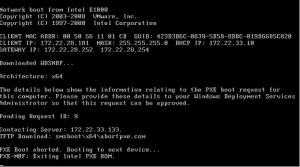How to Speed Up Your Computer: 50 Tips


How to Speed Up Your Computer: 50 Tips


As your computer ages, you might notice a gradual decline in its performance. Applications take longer to load, programs become less responsive, and overall productivity takes a hit. Don’t worry – there are numerous strategies you can employ to rejuvenate your computer’s speed and optimize its functionality. In this comprehensive guide, we’ll explore 50 in-depth tips that cover everything from hardware upgrades to software tweaks. Let’s dive in and breathe new life into your computing experience.
The Quest for Speed: Why Computers Slow Down
Before we jump into the tips, let’s delve into the factors that contribute to the slowdown of computers:
Hardware Aging and Wear
Over time, the physical components of your computer, such as the hard drive, RAM, and CPU, experience wear and tear. This can result in decreased efficiency and slower processing speeds.
Software Accumulation
Every program you install leaves behind traces – temporary files, registry entries, and residual data. As these accumulate, they occupy valuable storage space and slow down your system’s performance.
Resource-Intensive Applications
Modern software, especially resource-hungry applications and games, demands more processing power and memory. Running multiple memory-intensive programs simultaneously can lead to lag and decreased responsiveness.
Outdated Drivers and Software
Using outdated drivers and software can hinder your computer’s performance. Regular updates not only provide security patches but also improve efficiency.
Optimizing Your Computer’s Performance
Get ready to supercharge your computer with these 50 expert tips:
1. Clear Cache and Temporary Files
Start by regularly clearing your browser cache, temporary files, and system caches. This frees up storage space and ensures your system operates smoothly.
2. Keep Your Operating System Up-to-Date
Install operating system updates promptly. These updates include bug fixes, security patches, and performance enhancements.
3. Update Hardware Drivers
Keep all hardware drivers up-to-date. Manufacturers release driver updates to optimize compatibility and performance.
4. Disable Unnecessary Startup Programs
Many programs launch during startup, potentially slowing down boot times. Disable unnecessary startup programs to speed up the process.
5. Uninstall Unused Software
Clean house by removing software you no longer use. Unnecessary programs consume valuable system resources.
6. Consider Hardware Upgrades
If your computer’s hardware is struggling, consider upgrading components. Adding more RAM or switching to a solid-state drive (SSD) can make a significant difference.
Enhancing System Performance
7. Optimize Your Hard Drive
For traditional hard drives, perform periodic defragmentation to ensure files are organized efficiently. For SSDs, use the TRIM command to maintain performance.
8. Adjust Power Settings
Adjust your computer’s power settings to “High Performance” mode. This ensures your hardware operates at its peak potential.
9. Reduce Visual Effects
Turn off or minimize resource-heavy visual effects, such as animations and transparency, for a smoother experience.
10. Regularly Clean Dust and Dirt
Clean the internals of your computer, including fans and heat sinks, to prevent overheating and performance throttling.
11. Opt for a Lightweight Antivirus
Choose an antivirus program that doesn’t consume excessive system resources. Look for solutions specifically designed for performance.
12. Manage Browser Extensions
Limit the number of browser extensions you use. Unnecessary extensions can slow down your browser’s loading times.
13. Utilize Disk Cleanup Tool
Use your system’s built-in Disk Cleanup tool to eliminate temporary and unnecessary files that accumulate over time.
14. Embrace the Power of SSDs
Upgrade to an SSD for improved system responsiveness and faster data access speeds compared to traditional hard drives.
15. Fine-Tune Virtual Memory
Adjust your computer’s virtual memory settings to ensure efficient memory management and enhance performance during memory-intensive tasks.
16. Keep BIOS Updated
Regularly update your computer’s BIOS to ensure compatibility with new hardware and take advantage of performance optimizations.
17. Tame Windows Search Indexing
Turn off or limit Windows Search Indexing, especially if you don’t frequently search for files on your computer.
18. Opt for a Lightweight Browser
Consider using browsers known for their efficiency and speed, such as Mozilla Firefox or Chromium-based browsers.
19. Upgrade Graphics Card Drivers
Ensure your graphics card drivers are up-to-date to optimize gaming performance and graphical tasks.
20. Monitor Resource Usage
Keep an eye on resource usage through the Task Manager or third-party tools to identify resource-intensive applications.
Tips for an Elevated Performance
21. Manage Browser Tabs Efficiently
Limit the number of open browser tabs to conserve memory and prevent slowdowns.
22. Disable System Animations
Reduce strain on your GPU by turning off animations and visual effects in the operating system settings.
23. Maintain a Clean Registry
Use reputable registry cleaning software to remove obsolete entries and improve system performance.
24. Declutter Your Desktop
Avoid overloading your desktop with icons, as this can impact system performance and boot times.
25. Manage Background Apps
Monitor and control background applications to prevent unnecessary resource consumption.
26. Upgrade Your RAM
If your system feels sluggish, consider upgrading your RAM. More RAM allows for smoother multitasking and improved overall performance.
27. Turn Off Windows Animations
Disable unnecessary animations in Windows settings to conserve system resources.
28. Opt for a Lightweight Antivirus
Choose an antivirus program known for its minimal impact on system performance while offering robust protection.
29. Enable Fast Startup
Enable fast startup to reduce boot times and get to work or play faster.
30. Monitor and Manage Background Processes
Keep an eye on background processes and services that might be using system resources unnecessarily.
Hardware Upgrades and Advanced Techniques
31. Opt for CPUs with More Cores
If you’re into demanding tasks like video editing or content creation, consider upgrading to a CPU with more cores for enhanced multitasking.
32. Upgrade Your Graphics Card
For better gaming and graphical performance, consider upgrading to a newer and more powerful graphics card.
33. Increase Monitor Refresh Rate
Upgrade to a monitor with a higher refresh rate to enjoy smoother visuals, especially in fast-paced games.
34. Harness the Power of Multiple Monitors
Boost productivity and multitasking by adding additional monitors to your setup.
35. Embrace Dual-Channel RAM
Maximize memory performance by using dual-channel RAM configurations, which improve memory bandwidth.
36. Upgrade Network Cards
If you experience slow internet speeds, consider upgrading to a faster network card for improved online experiences.
37. Renew Thermal Paste
Applying new thermal paste to your CPU can help improve thermal conductivity and lower temperatures.
38. Explore Liquid Cooling
For efficient and quieter cooling, explore liquid cooling solutions that can dissipate heat more effectively.
39. Incorporate Additional Fans
Enhance airflow and cooling by adding extra fans to your computer case.
40. Upgrade Your Power Supply
Ensure your power supply unit (PSU) provides sufficient wattage and stability for your upgraded components.
41. Consider Overclocking
If you’re comfortable with advanced techniques, consider overclocking your CPU or GPU to extract more performance.
Software Tweaks for a Turbocharged System
42. Disable Windows Tips and Notifications
Turn off distracting Windows tips and notifications to conserve system resources.
43. Disable Transparency Effects
Turn off transparency effects in Windows settings to reduce GPU load and improve performance.
44. Optimize Pagefile Settings
Fine-tune your system’s pagefile settings to optimize virtual memory usage and boost overall performance.
45. Disable Unnecessary Services
Identify and disable unnecessary Windows services to free up resources and improve performance.
46. Manage Startup Applications
Take control of startup applications to prevent them from slowing down your computer’s boot process.
47. Leverage Windows Game Mode
Activate Windows Game Mode to prioritize system resources for gaming, ensuring a smoother gaming experience.
48. Regularly Clear Browser History
Keep your browser efficient by clearing your browsing history, cache, and cookies regularly.
49. Optimize Virtual Memory
Adjust virtual memory settings for optimal performance when using memory-intensive applications.
50. Consider a Fresh OS Installation
If all else fails, consider a clean installation of your operating system. This can remove accumulated clutter and restore your computer’s performance.
Concluding the Pursuit of Speed
By applying these 50 comprehensive tips, you’re well on your way to transforming your computer into a nimble and efficient machine. Tailor these strategies to your specific system and needs for the best results. With dedication and a touch of technical finesse, you can relish in a faster, smoother computing experience.








